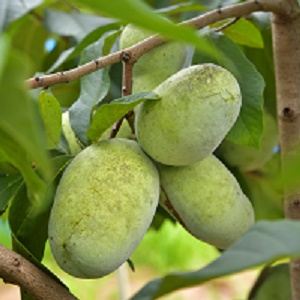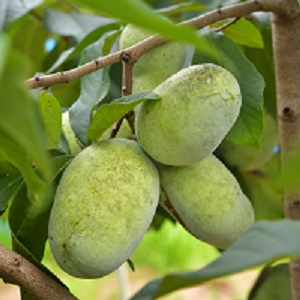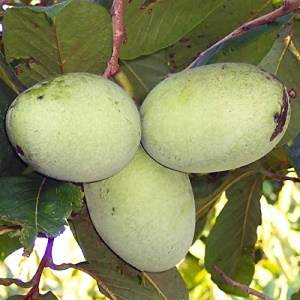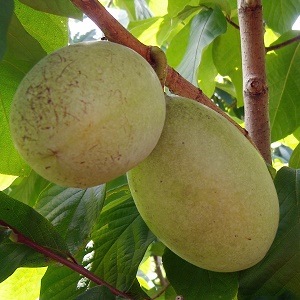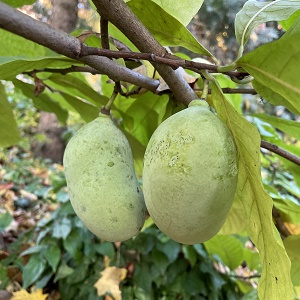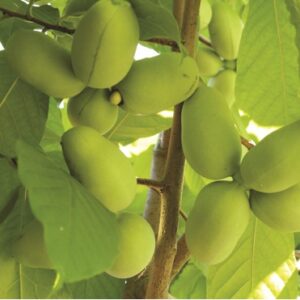Pawpaw : CAMPBELL NC-1 3 gallon pot PICKUP ONLY
$99.95
Considered to be one of the most ornamental pawpaw trees, its large leaves are a dark, blueish-green. NC-1, selected in 1976 by R. Douglas Campbell here in Ontario, ripens in mid-September, making it especially suited for colder climates. Large fruits have thin yellowish-green skin, buttery yellow flesh with few seeds and very good flavour.
PICK UP ONLY
NEEDS A POLLENIZER | ZONE 5 | HARVEST: MID SEPT
Other products in this zone
Growing Tips
In most cases, we recommend planting bareroot fruit trees at their permanent site as soon as you get them. However, the trees in this section of the catalogue (Pawpaws, Persimmons and Jujubes) will often benefit from spending a few more years in a pot. Since these species do not take as well to bareroot handling, we receive them as very small trees in pots. We suggest you repot them in a 2 or 3 gallon container and grow them for several seasons. Pawpaws in particular, will appreciate this, as the tender young trees will prosper much more if you can keep them out of direct sunlight. This way you also have the option of overwintering them in your garage until they are bigger and stronger.
See Page 80 for 3 gallon Root Trapper® Containers.

